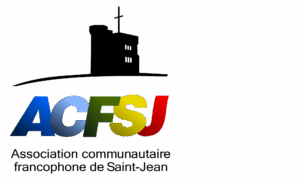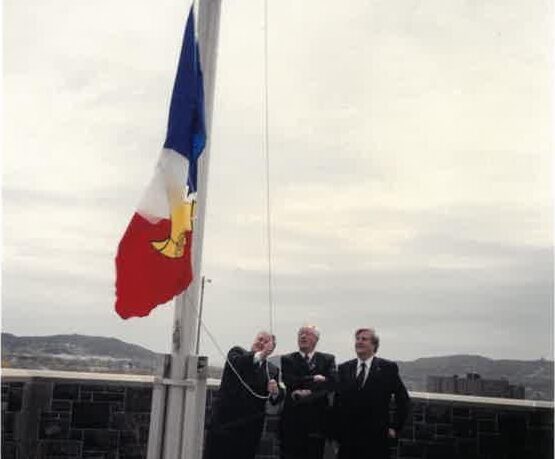
In the 1970s, before the official establishment of the Association francophone de Saint-Jean, French-Newfoundlanders in the region met informally to create community contact. It is difficult to know how long this informal organization existed, but it is a testament to the community's deep roots in Saint-Jean.
To ensure fair representation of the entire community, Francophones wanted to formalize the grouping. However, professors in the French Department at Memorial University of Newfoundland decided to encourage the use of the French language. These two congruent objectives led to collaboration between Francophile academics and members of the Francophone community, and then to the birth of the Association francophone de Saint-Jean (AFSJ). This association would take the name Association communautaire francophone de Saint-Jean, following the construction of the Community and School Centre, which it has managed ever since.
Today, the ACFSJ has approximately 200 active members and serves the French-speaking community through numerous services, including a community access center, a library and French-language film screenings.
With approximately 35 active members at the time, the foundation's mission was to encourage the use of French, promote bilingualism and provide a cultural contact point for French speakers in and around Saint-Jean.
As soon as it was established, the Saturday School was an immediate success. Forty years later, the service still exists today under the name Saturday Club and offers a fun learning space for children whose first language is not French.
The AFSJ moved to 2 rue Henry. Their premises house a daycare center and the reception area for the United Nations office.
In October 1984, the birth of Gaboteur was celebrated in the same premises, which would later serve as its postal address to lend a helping hand to the young newspaper.
The French-speaking Frecker choir, precursor of the Rose des vents, directed until 198 by Tom Fagan, established itself and quickly gained popularity.
Learn more: History of the Compass Rose.
On September 20, the AFSJ was officially incorporated as a non-profit organization.
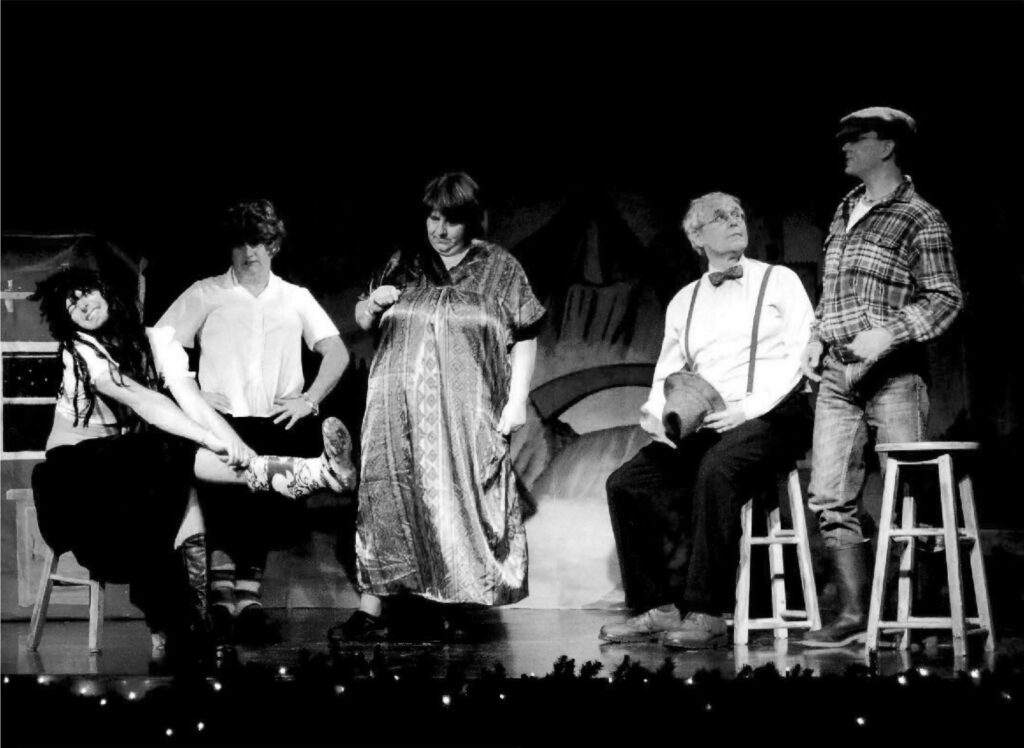
The Association created and presented its first play entitled Cinderella, Newfoundland style, written by Peter Ayres. It features a Newfoundland princess who goes by canoe to Red Island (the French name for Newfoundland), a prince who is trying to find out who owns the said princess's rubber boot, and all sorts of nods to French-Newfoundland culture.
Image: Performance of the play in 2009 for the traditional dinner show, Photography by Sylvain Luneau for Le Gaboteur.

The AFSJ buys a house at 96 LeMarchant Road and moves to larger premises.
Photography : House at 96 chemin LeMarchant, Photograph from our archives.
A French community radio station operated at 3e floor of the building on LeMarchant Street.
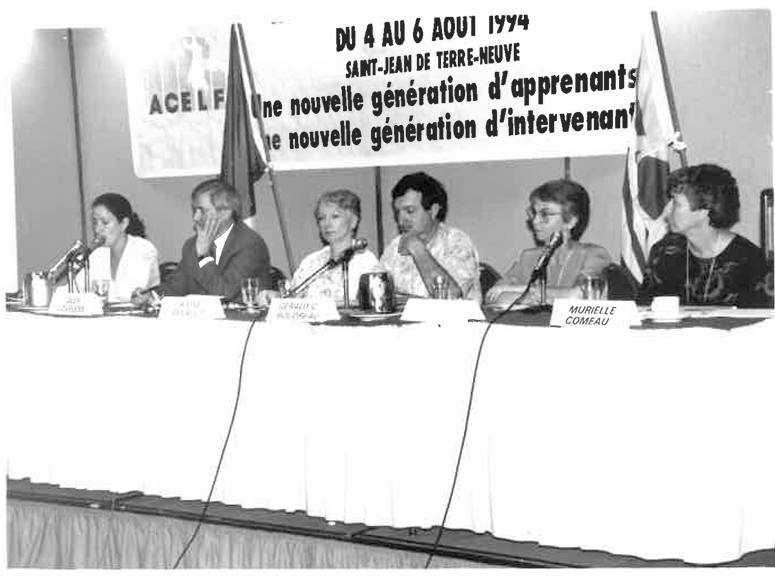
By the Association, the 47e The Canadian Association for French Language Education (ACELF) congress, “A new generation of learners, a new generation of stakeholders,” was hosted in Saint-Jean.
Image: 47th ACELF Congress, photograph from our archives.
The AFSJ began organizing guided tours of Saint-Jean and participating in official city events.
Having the same mission as the Frecker choir, dissolved four years earlier in 1992, the Rose des vents choir was formed by Jacques Chollet to take over from his predecessor, following the request of Andrée Thoms, the president of the Association at the time.
Even today, the choir is still active and bears the same name.
Learn more: History of the Wind Rose.
A committee, made up of representatives from different French-speaking organizations in Saint-Jean, is working on the development of a French-speaking school and community center in Saint-Jean.
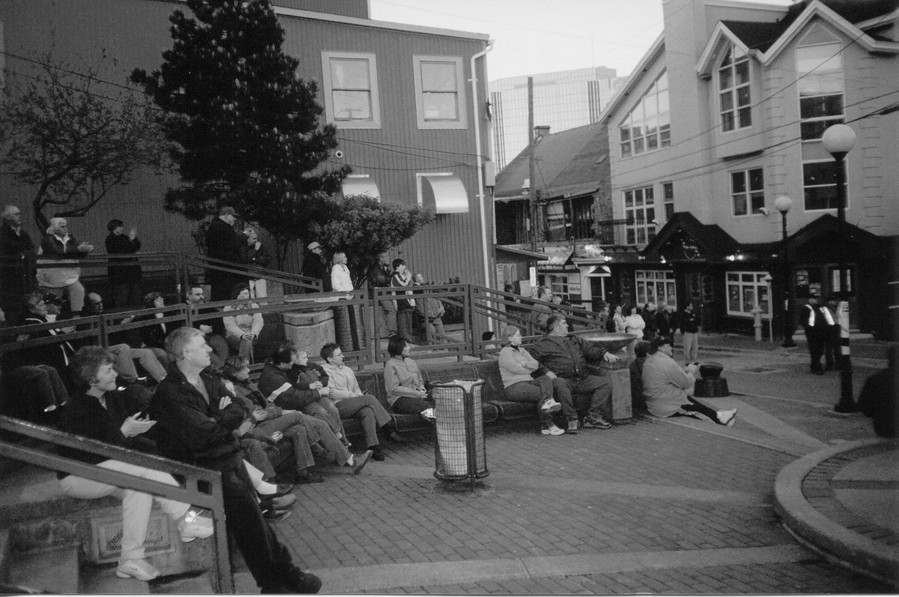
The AFSJ organized its first Franco-festival.
This festival, now known as the Festival du vent, brings together the Francophone community of the Saint John region to celebrate and promote Francophone culture on the Avalon Peninsula and increase the community's visibility. The Festival du vent provides the ideal opportunity to share and showcase the music, theatre, visual arts, and traditional gastronomy of the Francophonie, and to contribute to the cultural and tourism richness of our province. It features Francophone and Francophile artists from here and abroad.
Image: The 2004 open-air Franco-Festival at Murray Premises, a faded photograph from our archives.
In February, the Saint-Jean School and Community Centre Society was formed to manage the Grands-Vents School and Community Centre.
The ASFS merged with the Société du centre scolaire et communautaire de Saint-Jean, because of their similar mission and the need to share limited resources.
Following the merger, the ASFS took its present name: the Association communautaire francophone de St-Jean Inc. (ACFSJ).
The Association moved to the Centre des Grands-Vents, which would bring together all the French-speaking organizations in the province as well as the École des Grands-Vents.
To provide infrastructure to serve the community and a French-language school in Saint-Jean, the Grands-Vents School and Community Centre, commonly referred to as the "Centre" by locals, was founded. Since then, most activities and events have taken place there.
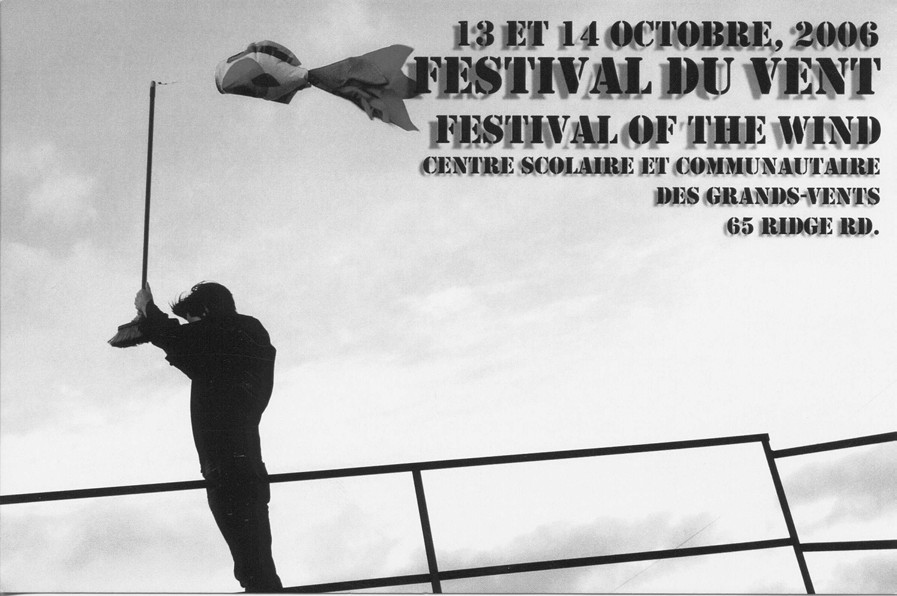
With the founding of the Grands-Vents Community and School Center, a new festival was born: the Wind Festival. Although annual, it has not yet found fixed dates, but takes place in the fall.
Photography: Poster for the 2nd edition of the Wind Festival.
Resources
“ Happy Gaboteur Day! 25 years of French-speaking provincial history » in Le Gaboteur, vol. 26, no. 01, published on October 5, 2005.
History of the Compass Rose, website of La Rose des Vents Chorale.
“The community celebrates the arrival of Christmas in Saint-Jean: stunning dinner show!” in The Gaboteur, vol. 26, no. 05, published on December 14, 2009.
“Did you know that… The Franco-Festival” in The Gaboteur, vol. 29, no. 21, published September 23.
